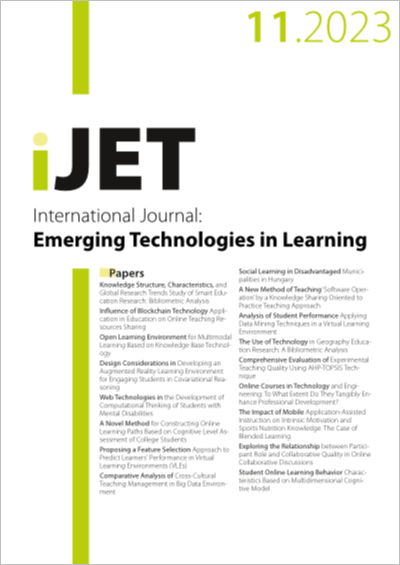Design Considerations in Developing an Augmented Reality Learning Environment for Engaging Students in Covariational Reasoning
DOI:
https://doi.org/10.3991/ijet.v18i11.38923Keywords:
Covariational reasoning, Design principles, RepresentationsAbstract
This study reports on findings of two design cycles of augmented reality environment intended to engage high school students in covariational reasoning. The study used a designed-based research method to develop and improve the learning environment. In this report, we present the initial design and discuss how it promoted students' engagement at elementary levels of covariation. Following this first cycle, we introduced a redesigned learning environment. We provide evidence of how the new design in the second cycle promoted students' engagement at advanced levels of covariational reasoning. Six groups of three 15- to 17-year-old students participated in the research. Using AR headsets, each group carried out two activities well-suited, in principle, to covariational reasoning. The students' interactions were video-recorded, and the theory of semiotic representation was used to analyze the degree of their engagement in covariational reasoning. The design emphasized multiple representations generally, and the compatibility between the explored phenomenon and its mathematical representations, specifically. Findings show that the design considerations in the second design cycle significantly improved the students' engagement at different levels of covariation, including advanced levels.
Keywords—covariational reasoning, representations, design principles
Downloads
Published
How to Cite
Issue
Section
License
Copyright (c) 2023 Otman Jaber, Dr. Osama Swidan, Prof. Michael N. Fried

This work is licensed under a Creative Commons Attribution 4.0 International License.


